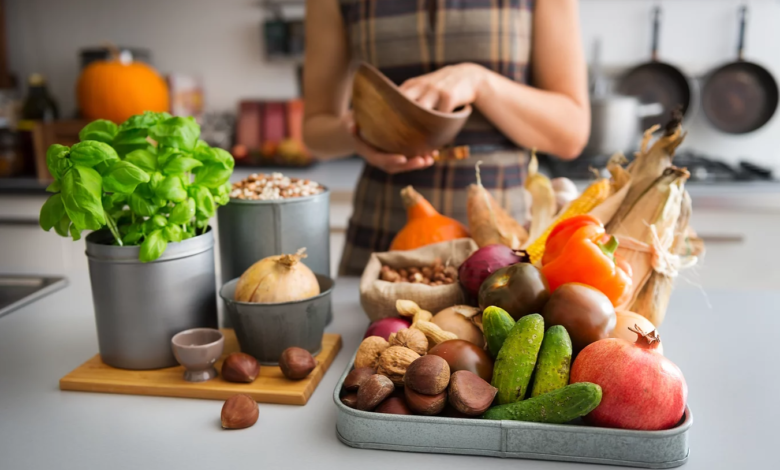Cooking for Wellness: Nourishing Your Body and Mind

In today’s fast-paced world, it’s essential to prioritize our health and well-being. One powerful way to achieve this is by cooking nutritious and delicious meals that nourish both our bodies and minds. Cooking for wellness involves creating meals that provide the essential nutrients our bodies need while promoting a positive mindset. In this blog, we will explore the art of cooking for wellness, focusing on nourishing recipes, mindful food choices, and the benefits of incorporating wholesome ingredients into our daily culinary practices.
- Create a Nutrient-Dense Plate (100 words):
When cooking for wellness, aim to create nutrient-dense plates that include a variety of colorful fruits and vegetables, whole grains, lean proteins, and healthy fats. Incorporating a rainbow of fruits and vegetables ensures a wide range of vitamins, minerals, and antioxidants in your meals. Utilize whole grains like quinoa, brown rice, or whole-wheat pasta that provide fiber and sustained energy. Incorporate lean proteins such as fish, poultry, beans, or tofu for muscle growth and repair. Lastly, don’t forget about healthy fats from sources like avocado, nuts, and olive oil to support brain health and overall well-being.
- Practice Mindful Food Choices (150 words):
Mindful food choices involve being aware of the impact of what we eat on our bodies and minds. Before preparing a meal, take a moment to connect with your body and assess its needs. Focus on whole, unprocessed foods and try to limit processed and sugary options. When grocery shopping, opt for locally sourced and organic produce whenever possible to reduce exposure to pesticides and support local farmers. Consider the environmental impact of your food choices by incorporating plant-based meals and sustainable ingredients. Mindful eating also involves staying present during the cooking process and being attentive to flavors, textures, and aromas. This allows us to fully appreciate our meals and foster a positive relationship with food.
- Embrace the Healing Power of Herbs and Spices (100 words):
Herbs and spices not only add incredible flavor to our meals but also offer numerous health benefits. Incorporate herbs like basil, cilantro, and mint in salads and sauces to provide an extra dose of antioxidants and anti-inflammatory properties. Spices like turmeric, cinnamon, and ginger have been linked to improved digestion, reduced inflammation, and increased immunity. Experimenting with different herbs and spices allows you to enhance the nutritional content of your dishes while adding depth and complexity to flavors.
- Find Joy in the Cooking Process (150 words):
Cooking for wellness is not only about the end result but also the process itself. Approach cooking with a positive mindset and find joy in the act of creating nourishing meals. Play your favorite music, involve loved ones, or explore new recipes and techniques. Engaging in the cooking process can be therapeutic and provide a sense of accomplishment. Additionally, try to devote a mindful moment to show gratitude for the ingredients that go into your meal. Appreciating the effort and work that goes into growing and preparing our food can enhance our connection to the nourishment we receive.
- Customize Recipes to Suit Your Needs (100 words):
Don’t be afraid to adapt recipes to suit your nutritional needs or dietary restrictions. Explore alternatives to traditional ingredients to accommodate allergies, intolerances, or personal preferences. For example, gluten-free substitutes or plant-based alternatives can be incorporated seamlessly into a wide range of recipes. Customizing recipes allows you to enjoy your favorite dishes while still prioritizing your health and well-being.
- Share Nourishment with Others (100 words):
Cooking for wellness extends beyond nourishing our own bodies. Share your nutritious creations with loved ones and foster a sense of community and connection. Invite friends or family for a shared cooking experience or organize potluck gatherings where everyone can contribute a healthy dish. Sharing nourishment creates a positive environment and reinforces the importance of healthy eating habits.
Conclusion:
Cooking for wellness goes beyond mere sustenance. It embraces the concept of nourishing both our bodies and minds through mindful food choices and delicious, nutrient-dense meals. By creating colorful and balanced plates, practicing mindful eating, incorporating healing herbs and spices, finding joy in cooking, customizing recipes, and sharing nourishment with others, we can transform our relationship with food and promote overall well-being. Embrace the power of cooking as a tool for self-care and prioritize your health through the creation of wholesome, delicious meals that support a vibrant and fulfilling life.




